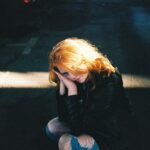What portrait photographers can learn from movies

In the past I’ve often heard from friends and relatives again and again “you just have such an eye for it, you’ve got the gift” for portrait photography, as if I was born with a coveted genetic defect, the “photographer gene“.
Similarly, I’ve heard people talk about musicians, actors and other creative people, if you have it, you have it. Of course that’s nonsense, because although Gene is given a certain role, in the end it comes down to curiosity, motivation and external circumstances.
The truth is, this photographic eye is something learned, rehearsed, just like the trained ear, the presence on stage, the craft in a pastry shop or the programming of a code. Now, however, there are actually people who somehow by nature, even with their mobile phone, seem to take better pictures than some others, with expensive equipment: without any training or previous experience. I don’t think it comes from a talent or a “photographer gene”. But by attentive observation and perception.
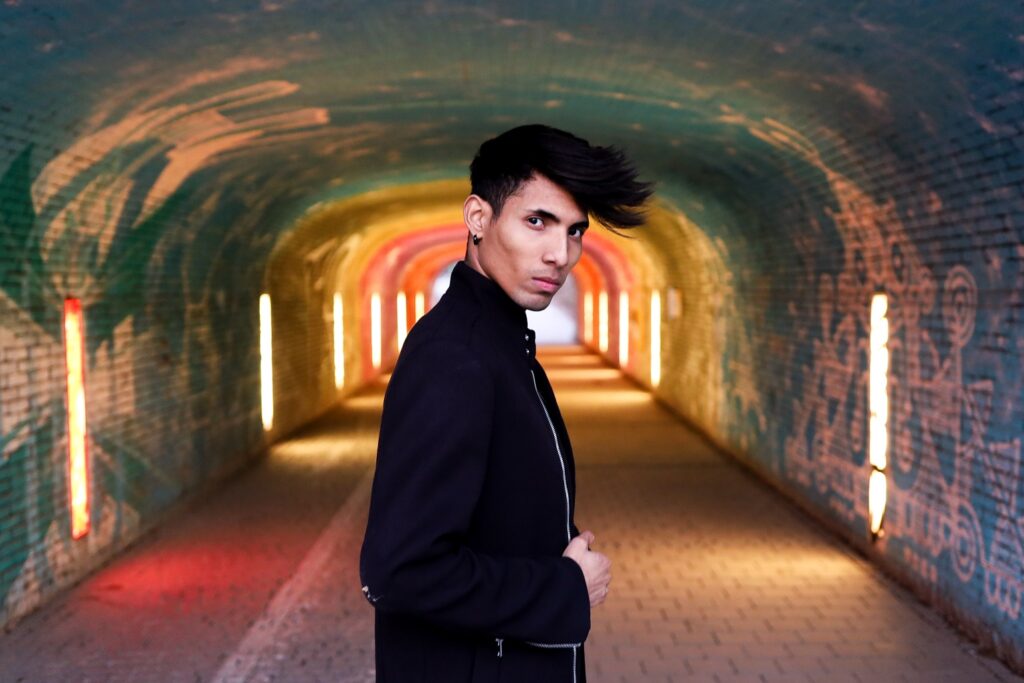
You may already heard about the saying “monkey sees, monkey does“. Those who perceive and look at good photography unconsciously learn, for example, compositions, rules and color theory. The “perfect picture” already forms itself in front of the inner eye, what is then usually lacking is know-how about technology, equipment and generally how these pictures can be implemented at all: A problem that I often encounter in workshops or coaching and is easier to fix.
Nothing is by accident, movies and shows as inspiration for photographers
The rules of photography can by no means only be found in images, they also apply to moving frames. Maybe they’re even more represented on the big screen, because there’s not “just” one photographer working there. Instead, behind a production, there is a complete team of experts from a wide variety of areas. Therefore, films and series have tons of exciting techniques in stock to captivate their audience, from which photographers can be inspired, especially in the portrait area. Here is an overview of different roles on set and what you can learn from them.
Probably the most important person on the set: the director
Is responsible for the composition, the framing and the selection of the equipment, among other things. The last aspect in particular has an enormous influence, because the choice of lens and the associated focal length alone can change the entire visual language, mood and look of a film.
Photographers who have already developed a feeling for what a fixed focal length looks like can have a lot of fun observing exactly which lens was used and why it was chosen. Does the scene have a close-up with a 135 mm lens on a pen signing a historical document, or a wide-angle lens that distorts the protagonist’s face to show his increasing decline into insanity.
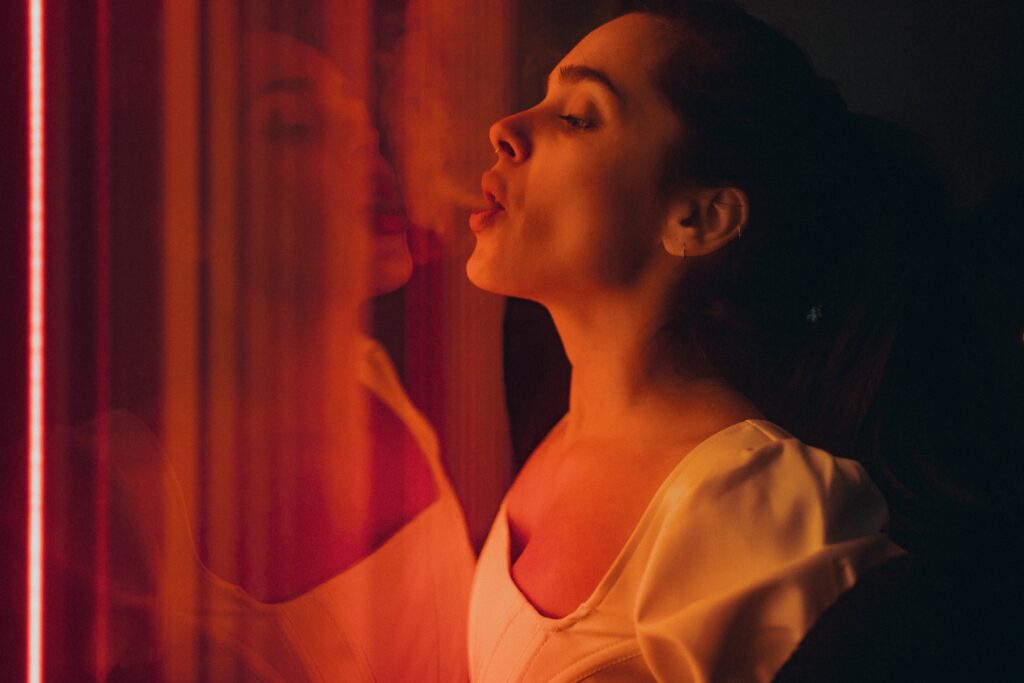
The choice of perspective is at least as important as the choice of lens. It’s fun to take a close look and think about why this particular perspective was chosen.
In this iconic scene from The Shining, director Stanley Kubrick first uses a “Point of View” (aka POV) and then an “Over the Shoulder” perspective to give viewers the feeling of being right up close to be action. In addition, the camera moves vertically with the footsteps of Jack Nicholson and Shelley Duvall, giving the impression of walking with the actors/actress. After the climax of the scene, the perspective changes again to a further away view, at the foot of the stairs, giving the viewer a little more room to breathe: intense, oppressive and brilliant!
In practice, I like to use the “over the shoulder” or POV perspective for work reports, weddings or musician shoots, for example, whenever it’s about bringing the viewer as close as possible to the action.
The background experts: prop master
They are responsible for helping directors realize his ideas and vision when it comes to all larger moving background elements. It’s about the acquisition and maintenance of chairs, tables, cupboards or any easily movable objects. Accordingly, prop masters are often accompanied by prop makers, who can also produce bespoke items.
It is therefore worthwhile for photographers to take a close look at the set and the background, because each object has been carefully placed, is consciously chosen and has an intention to create a certain mood. In practice, one might think that this is only relevant for studio photographers, especially those who want to put together or even open a studio at home themselves.
But available light photographers can also learn a lot here. There are so many great locations and corners to discover outside the studio, and the more experienced you are, the easier it is to find potential that is actually at your feet. Recently, for example, I deliberately chose my Airbnb as a possible location for pictures.
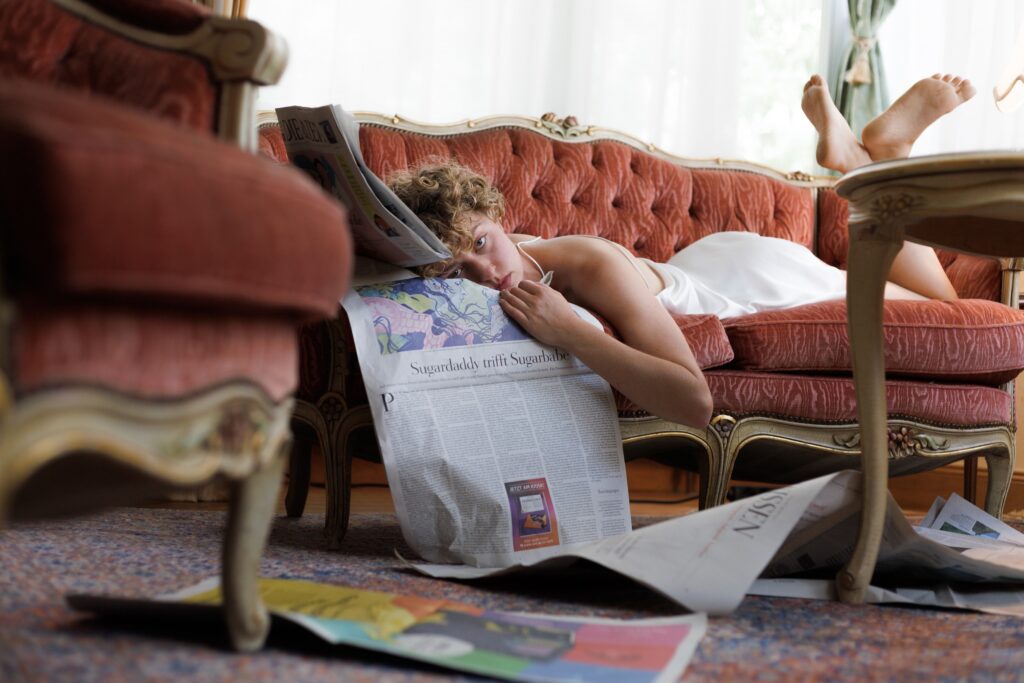
An eye for detail: set designers
They are responsible for the details and worry about the exact placement of “smaller” background elements. This can be pictures on the wall, clocks on the bedside table or books in a closet. Details that should not be underestimated. For example, the choice of crockery on the dining table during a dinner scene can subtly tell the audience a lot about a family’s financial situation. Here’s an example from the classic “American Beauty” from 1999.
Filmmakers often allow themselves the fun of deliberately hiding “Easter Eggs” in the background, which attentive viewers can discover. These are small details, like funny allusions or hidden clues, that reveal more about the plot/meaning of the film. A well-known example can be found in the film “Fight Club“, where a Starbucks cup can be spotted in every scene, a nod to the growing influence of capitalism in our everyday lives.
In the field of photography, you can create a lot in the viewer with small elements in the background. Unfortunately, such details are more often overlooked than consciously used, at least in my experience.
For me as a photographer who works a lot in the field of portraits, this means in practice that I think in advance about what objects I should take with me or ask my customers to take with, from legal to boudoir shootings. Because these objects not only create a certain mood and underline a visual language: They can also be used wonderfully.
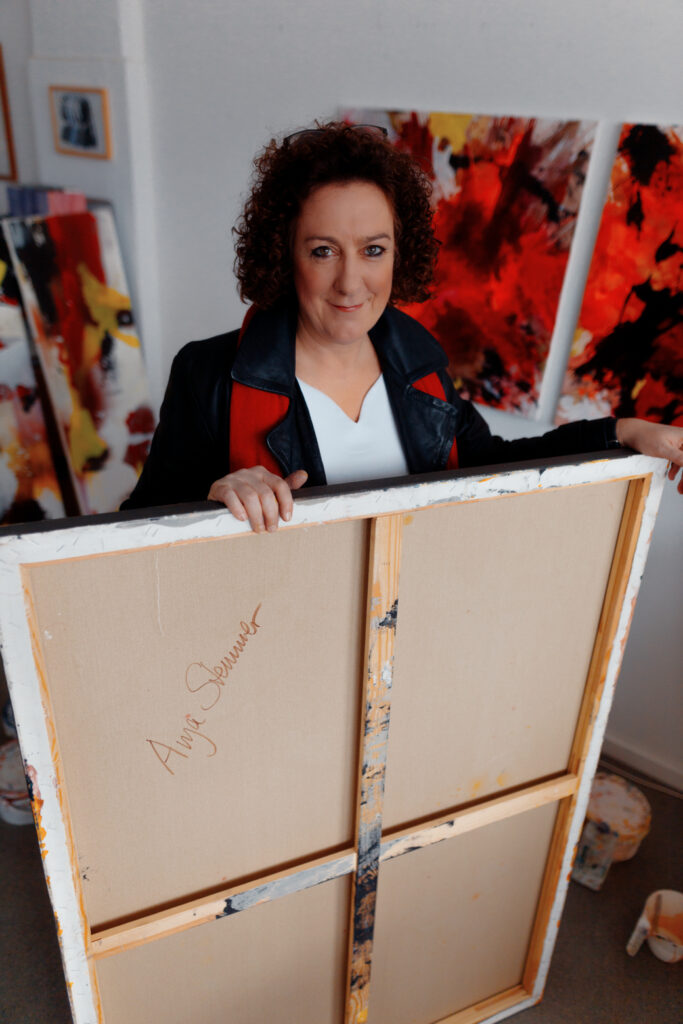
Creating their own look: picture directors
Perhaps the term “cinematographer” or “director of photography” is more appropriate, because their core skills are very similar to those of experienced photographers. They work tighly with the lighting team, actively determining the look of the film through the choice of camera, lens, film (provided the production is not entirely digital), framing and determining camera movements. Their work is of course very closely linked to the vision of directors.
In my opinion, what is exciting for portrait photographers is the choice of film, or color calibration, grain, i.e. the look. Especially since I’ve been shooting a lot on film, I pay more attention to the image look of films and appreciate it. For example, the second season of the show Euphoria was shot entirely on film, Kodak color stock re-produced especially for the season. The look is impressive (although I would recommend you to watch the show in its entirety instead of the trailer):
These days I’ve even started to offering shootings completely on film when it comes to portraits, not just for the fun and the challenge but also the look of it.
Collect influences and get started
Especially when it comes to the constancy of your own photography, photo directors can inspire and set impulses for your own picture look. I myself pay attention to color schemes and accents that particularly catch my eye and try to incorporate them into my work. Another, slightly more expensive, option is to use different film stocks and find out why film photography is still a valid choice among professional photographers today.
Not only with elaborately produced series and films there is a lot to “watch”, low-budget productions also have a lot to offer, especially in the indie area of the film industry there is more experimentation and creativity. For example, I recently discovered the 1970 classic Slavic film “Valerie – A Week Full of Miracles“, highly recommended! Alternatively, you can also let the Instagram channel “The Film Zone” or “classicnymph” shower you with it.
The most important thing, however, is implementation. Because the best ideas and impressions are just hot air if you don’t try to put them on (photo) paper, which, by the way, I have to keep reminding myself of all the time. In case you’re interested how I implement those things while planning a shoot, look no further.
I hope this blog entry will motivate you to take a closer look and inspire you the next time you enjoy a movie. In addition to new influences, good feedback is also an important source for trainee photographers. So don’t skip on collecting some from time to time. And in case you want to learn about composition, I’ve a blog post about that as well.





